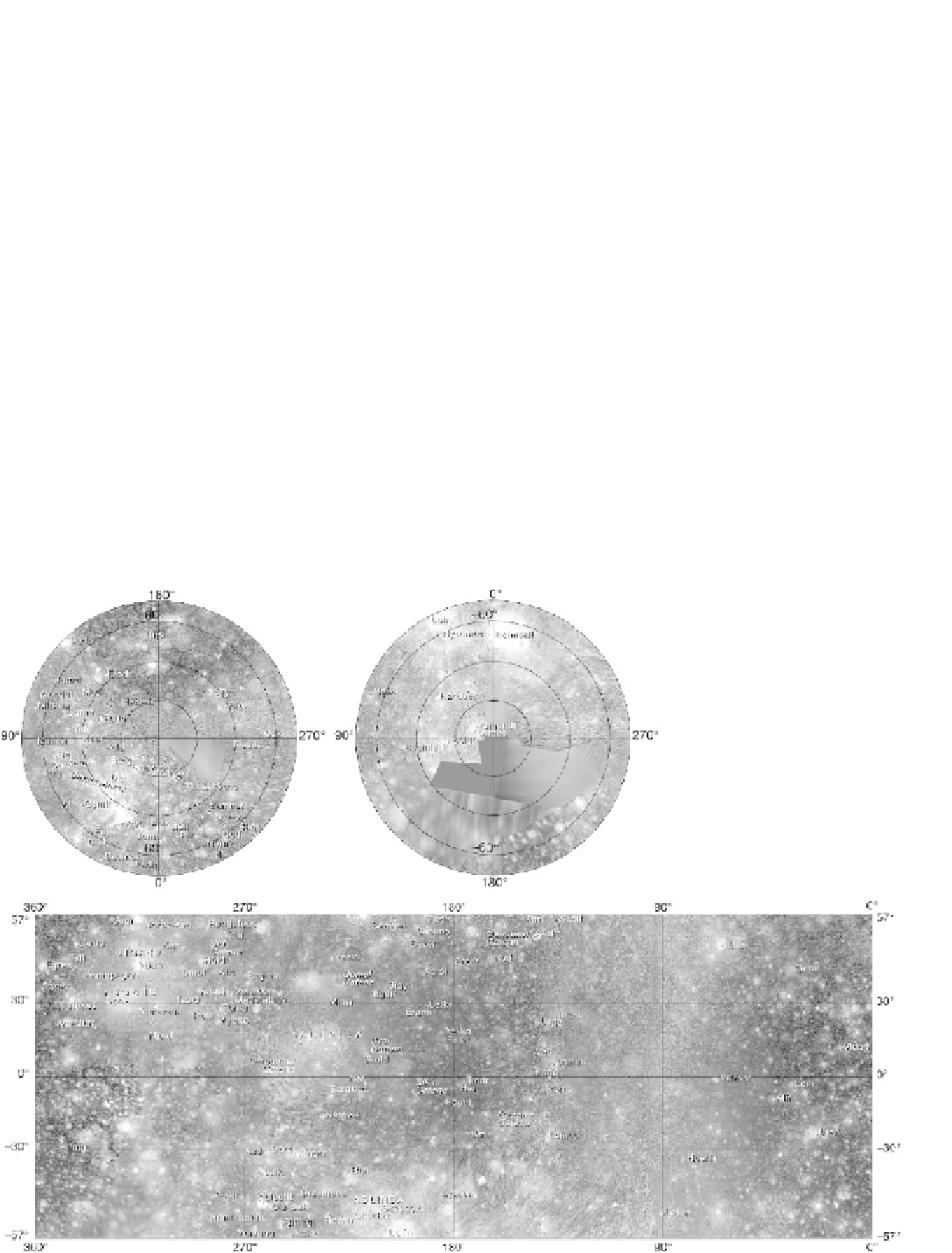Geology Reference
In-Depth Information
Thus, the tectonic patterns exhibited in the images of
Ganymede
'
s surface re
ect not only tidal interactions
within the Jupiter system but also deformation associated
with ice evolution.
various organic compounds. Carbon dioxide is found
almost everywhere, but with slightly higher abundances
on the trailing hemisphere and around impact features,
with the youngest craters showing the largest abundance.
Callisto is the darkest of the Galilean satellites, yet it is
still twice as bright as Earth
is Moon. Its density is only
about 1.8 g/cm
3
, making it the least dense of the Galilean
satellites and suggesting that it has the greatest proportion
of water. Images show that its surface is heavily cratered
but has relatively little relief. Except for terrains related to
large impacts, the surface viewed by spacecraft is essen-
tially uniform, consisting of dark, heavily cratered terrain.
'
8.7 Callisto
Callisto is the outermost of the Galilean satellites and, at
4,819 km in diameter, it is slightly smaller than Mercury.
Although Callisto is not signi
cantly affected by tidal heat-
ing, it is partly differentiated, with an ice-rich outer layer
< 500 km thick, an intermediate ice
-
metal core
(Fig. 8.4)
. Galileo magnetometer data show that
Callisto has a magnetic
field induced by Jupiter, indicative
of a salty ocean deep below the icy crust.
Callisto
-
rock zone, and a rock
8.7.1 Physiography
Callisto is more heavily cratered than even the oldest
terrain on Ganymede
(Fig. 8.44)
. Many planetary scien-
tists see Callisto as essentially devoid of internal activity
is surface composition is ice, Mg- and Fe-
bearing hydrated silicates, SO
2
, possibly ammonia, and
'
Figure 8.44. A map of Callisto with key place names (from Spencer et al.,
2004
).



